
Keywords: agriculture
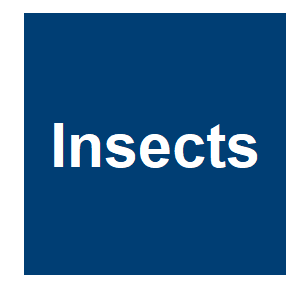
|
Genome and Transcriptome Analyses Facilitate Genetic Control of Wohlfahrtia magnifica, a Myiasis-Causing Flesh FlyZ. Jia, S. Hasi, D. Zhan, B. Hou, C. Vogl and P. A. Burger, Insects, 14. 2023.
Myiasis caused by Wohlfahrtia magnifica is a widespread parasitic infestation in mammals. The infested host suffers from damage as the developing larvae feed on its tissues. For the control of myiasis infestation, genetic methods have been shown to be effective and promising as ... Keywords: agriculture, Cas 9, CRISPR, gene drive synthetic, gene editing, governance, plants, policy, regulation |

|
Scientists are Gene-Editing Flies to Fight Crop DamageE. Mullin, WIRED, 2023.
In greenhouses in Oregon last month, researchers with the US Department of Agriculture began testing one such approach: sterilized male flies. The gene-edited bugs, made by St. Louis–based biotech company Agragene, are meant to suppress wild fly populations. The idea is that if ... Keywords: agriculture, Cas 9, CRISPR, gene drive synthetic, gene editing, governance, plants, policy, regulation |

|
To fight berry-busting fruit flies, researchers focus on sterilizing the bugsM. Walling, KTAL News.com, 2023.
Paul Nelson is used to doing battle with an invasive fruit fly called the spotted wing drosophila, a pest that one year ruined more than half the berries on the Minnesota farm he and his team run. In recent years, they’ve cut their losses closer to 5%, but it’s been ... Keywords: agriculture, Cas 9, CRISPR, gene drive synthetic, gene editing, governance, plants, policy, regulation |
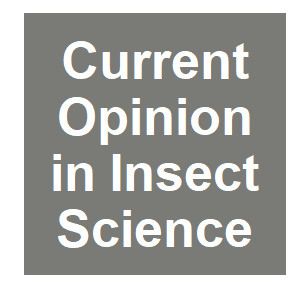
|
Wolbachia-based strategies for control of agricultural pestsJ. T. Gong, T. P. Li, M. K. Wang and X. Y. Hong, Curr Opin Insect Sci, 101039:10.1016/j.cois.2023.101039. 2023.Wolbachia-based incompatible insect technique (IIT) and pathogen blocking technique (PBT) have been shown to be effective at protecting humans from mosquito-borne diseases in the past decades. Population suppression based on IIT and population replacement based on PBT have become ... Keywords: agriculture, Cas 9, CRISPR, gene drive synthetic, gene editing, governance, plants, policy, regulation |
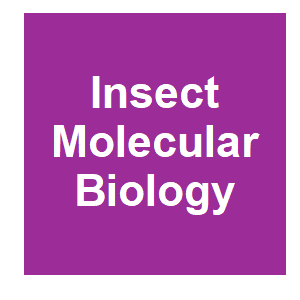
|
Development of transgenic corn planthopper Peregrinus maidis that express the tetracycline transactivatorA. A. Patil, W. Klobasa, D. Espinoza-Rivera, O. Baars, M. D. Lorenzen and M. J. Scott, Insect Molecular Biology, 32:363-375. 2023.
Abstract The corn planthopper, Peregrinus maidis, is a vector of several maize viruses and is consequently a significant agricultural pest in many tropical and subtropical regions. As P. maidis has developed resistance to insecticides, the aim of this study was to develop ... Keywords: agriculture, Cas 9, CRISPR, gene drive synthetic, gene editing, governance, plants, policy, regulation |
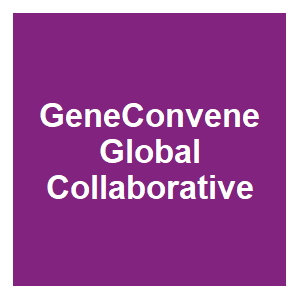
|
Emerging Gene Drive ApplicationsDavid O'Brochta, , 2023.
Gene drive systems are being engineered in the laboratory and in some cases shown to be effective at rapidly altering target-gene frequencies in experimental populations. Much of this foundational work has been conducted in insects in the laboratory. This webinar series will ... Keywords: agriculture, Cas 9, CRISPR, gene drive synthetic, gene editing, governance, plants, policy, regulation |

|
Gene Drive Technology With Agricultural Application PotentialR. Carmeli-Peslak, SeedWorld, 2023.
Gene drive technology, a genetic phenomenon that occurs in nature, causes a trait to spread in species through sexual reproduction over many generations. The inheritance rate is higher than the Mendelian rate which is 50%. Gene drives have been used for public health and ... Keywords: agriculture, Cas 9, CRISPR, gene drive synthetic, gene editing, governance, plants, policy, regulation |

|
How CRISPR could help save crops from devastation caused by pestsE. F. Merchant, MIT Technology Review, 2023.
Researchers are now looking to add cutting-edge technology to California’s anti-Pierce’s arsenal, by changing the genome of the glassy-winged sharpshooter so that it can no longer spread the bacterium. Such a solution is possible thanks to CRISPR gene-editing technology, ... Keywords: agriculture, Cas 9, CRISPR, gene drive synthetic, gene editing, governance, plants, policy, regulation |

|
Imperial startup Biocentis to develop genetic tech to control harmful insectsD. Silverman, Imperial College London, 2023.
The Imperial startup was founded in 2022 by Imperial researchers in partnership with technology-focused investment group Neurone to create a more effective and sustainable alternative to pesticides. While insects play an essential role in the global ecosystem, among the ... Keywords: agriculture, Cas 9, CRISPR, gene drive synthetic, gene editing, governance, plants, policy, regulation |

|
Gene editing and agrifood systemsFAO, FAO, 2022.
Gene-editing technologies represent a promising new tool for plant and animal breeding in low- and middle-income countries. They enhance precision and efficiency over current breeding methods and could lead to rapid development of improved plant varieties and animal breeds. ... Keywords: agriculture, Cas 9, CRISPR, gene drive synthetic, gene editing, governance, plants, policy, regulation |

|
Scientist Recommends Gene Drive Strategies Of Pest Control To Increase Food SecurityL. Agbo, allnews, 2022.
A Nigerian scientist, Dr. Rose Gidado has recommended that Nigerian policymakers and farmers adopt the technology of a gene drive-based pest management technique in order to increase bumper harvest and food security.In an interview with NAN on Monday in Abuja, Gidado, the Deputy ... Keywords: agriculture, Cas 9, CRISPR, gene drive synthetic, gene editing, governance, plants, policy, regulation |

|
Improvement of Resistance in Plants Against Insect-Pests Using Genome Editing ToolsS. Bhat and S. Kumar, Genome Editing: Current Technology Advances and Applications for Crop Improvement, 2022.
During growth period plants are subjected to both biotic and abiotic stresses. Like other biotic stresses, insect-pests are the most serious challenge for the plants particularly in yield losses. Genome editing techniques are becoming an emerging technology bringing real ... Keywords: agriculture, Cas 9, CRISPR, gene drive synthetic, gene editing, governance, plants, policy, regulation |

|
Toward product-based regulation of cropsF. Gould, R. M. Amasino, D. Brossard, C. R. Buell, R. A. Dixon, J. B. Falck-Zepeda, M. A. Gallo, K. E. Giller, L. L. Glenna, T. Griffin, D. Magraw, C. Mallory-Smith, K. V. Pixley, E. P. Ransom, D. M. Stelly and C. N. Stewart, Science, 377:1051-1053. 2022.
Current process-based approaches to regulation are no longer fit for purpose Much effort has been expended globally over the past four decades to craft and update country-specific and multinational safety regulations that can be applied to crops developed by genetic engineering ... Keywords: agriculture, Cas 9, CRISPR, gene drive synthetic, gene editing, governance, plants, policy, regulation |

|
Researchers propose new framework for regulating engineered cropsNorth Carolina State University, Phys Org, 2022.
A Policy Forum article published today in Science calls for a new approach to regulating genetically engineered (GE) crops, arguing that current approaches for triggering safety testing vary dramatically among countries and generally lack scientific merit—particularly as ... Keywords: agriculture, Cas 9, CRISPR, gene drive synthetic, gene editing, governance, plants, policy, regulation |

|
Precision Guided Sterile Males Suppress Populations of an Invasive Crop PestN. P. Kandul, J. Liu, A. Buchman, I. C. Shriner, R. M. Corder, N. Warsinger-Pepe, T. Yang, A. K. Yadav, M. J. Scott, J. M. Marshall and O. S. Akbari, GEN Biotechnology, 1:372-385. 2022.
The Drosophila suzukii invasion of western countries has created an immense agricultural and economic threat to crop production. Despite many attempts to suppress its population, D. suzukii continues to destroy soft-flesh fruits. Precision guided sterile insect technique (pgSIT) ... Keywords: agriculture, Cas 9, CRISPR, gene drive synthetic, gene editing, governance, plants, policy, regulation |

|
CRISPR-based technology targets global crop pestUniversity of California - San Diego, Phys Org, 2022.
Applying new CRISPR-based technology to a broad agricultural need, researchers at the University of California San Diego have set their aims on a worldwide pest known to decimate valuable food crops. Nikolay Kandul, Omar Akbari and their colleagues first demonstrated the ... Keywords: agriculture, Cas 9, CRISPR, gene drive synthetic, gene editing, governance, plants, policy, regulation |
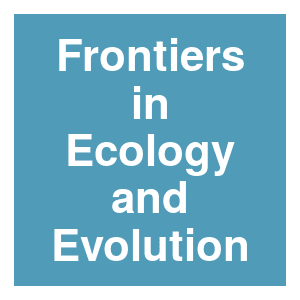
|
Natural and Engineered Sex Ratio Distortion in InsectsA. Compton and Z. Tu, Frontiers in Ecology and Evolution, 10. 2022.
Insects have evolved highly diverse genetic sex-determination mechanisms and a relatively balanced male to female sex ratio is generally expected. However, selection may shift the optimal sex ratio while meiotic drive and endosymbiont manipulation can result in sex ratio ... Keywords: agriculture, Cas 9, CRISPR, gene drive synthetic, gene editing, governance, plants, policy, regulation |
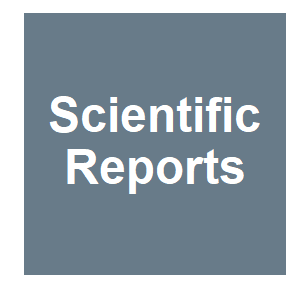
|
CRISPR-mediated knockout of cardinal and cinnabar eye pigmentation genes in the western tarnished plant bugC. C. Heu, R. J. Gross, K. P. Le, D. M. LeRoy, B. Fan, J. J. Hull, C. S. Brent and J. A. Fabrick, Scientific Reports, 12. 2022.
The western tarnished plant bug, Lygus hesperus, is a key hemipteran pest of numerous agricultural, horticultural, and industrial crops in the western United States and Mexico. A lack of genetic tools in L. hesperus hinders progress in functional genomics and in developing ... Keywords: agriculture, Cas 9, CRISPR, gene drive synthetic, gene editing, governance, plants, policy, regulation |
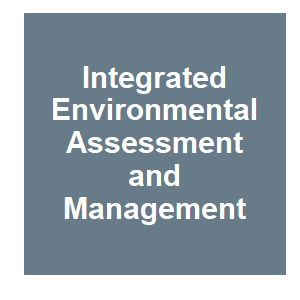
|
Insect Allies – Assessment of a Viral Approach to Plant Genome EditingK. Pfeifer, J. L. Frieß and B. Giese, Integrated Environmental Assessment and Management, 2022.
The DARPA program Insect Allies has already sparked scientific debate concerning technology assessment-related issues, among which the most prevalent is that of dual use potential. As apart from the issues concerning peaceful applications, the technology also provides the ... Keywords: agriculture, Cas 9, CRISPR, gene drive synthetic, gene editing, governance, plants, policy, regulation |

|
Stakeholder Views on Engagement, Trust, Performance, and Risk Considerations About Use of Gene Drive Technology in Agricultural Pest ManagementC. L. Goldsmith, K. E. Kang, E. Heitman, Z. N. Adelman, L. W. Buchman, D. Kerns, X. Liu, R. F. Medina and A. Vedlitz, Health Security, 2021.
Gene drive is an experimental technique that may make it possible to alter the genetic traits of whole populations of a species through the genetic modification of a relatively small number of individuals. This technology is sufficiently new that literature on the understanding ... Keywords: agriculture, Cas 9, CRISPR, gene drive synthetic, gene editing, governance, plants, policy, regulation |

|
Interaction Between Entomology and Gene Technology: Bt-transgenic and Gene Drives for Pests Control .J. C. Ndayıragıje, T. Özek, H. Çevik and İ. Karaca, Türk Bilim ve Mühendislik Dergisi, 3:108-115. 2021.
Pest control is the major agricultural activity for increasing crop productivity thus insuring food security. Recent pest management programs are depending too much on chemical pesticides, which are a threat to our health and environment. One of the greatest entomological ... Keywords: agriculture, Cas 9, CRISPR, gene drive synthetic, gene editing, governance, plants, policy, regulation |

|
Public Perceptions Regarding Genomic Technologies Applied to Breeding Farm Animals: A Qualitative StudyF. Z. Naab, D. Coles, E. Goddard and L. J. Frewer, BioTech, 10. 2021.
The societal acceptability of different applications of genomic technologies to animal production systems will determine whether their innovation trajectories will reach the commercialisation stage. Importantly, technological implementation and commercialisation trajectories, ... Keywords: agriculture, Cas 9, CRISPR, gene drive synthetic, gene editing, governance, plants, policy, regulation |

|
New report demands moratorium on gene drivesGM Watch, GM Watch, 2021.
To help the public understand what's at stake, the Germany-based NGO Save Our Seeds (SOS) has published a report, "Gene Drives: The New Dimension of Genetic Engineering", which can be downloaded as a pdf document. The report provides a scientifically founded overview of how ... Keywords: agriculture, Cas 9, CRISPR, gene drive synthetic, gene editing, governance, plants, policy, regulation |
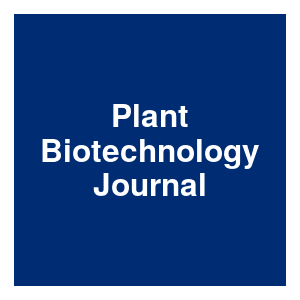
|
Insect pest management in the age of synthetic biologyR. Mateos Fernández, M. Petek, I. Gerasymenko, M. Juteršek, Š. Baebler, K. Kallam, E. Moreno Giménez, J. Gondolf, A. Nordmann, K. Gruden, D. Orzaez and N. J. Patron, Plant Biotechnology Journal, 2021.
Arthropod crop pests are responsible for 20% of global annual crop losses, a figure predicted to increase in a changing climate where the ranges of numerous species are projected to expand. At the same time, many insect species are beneficial, acting as pollinators and predators ... Keywords: agriculture, Cas 9, CRISPR, gene drive synthetic, gene editing, governance, plants, policy, regulation |

|
Attack of the SuperweedsH. C. Brown, New York Times, 2021.
If there’s a plant perfectly suited to outcompete the farmers, researchers and chemical companies that collectively define industrial American agriculture, it’s Palmer amaranth. This pigweed (a catchall term that includes some plants in the amaranth family) can re-root itself ... Keywords: agriculture, Cas 9, CRISPR, gene drive synthetic, gene editing, governance, plants, policy, regulation |
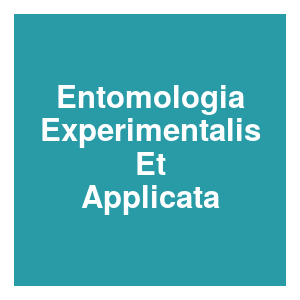
|
Host-associated differentiation of target pests should be assessed before using gene drive as a pest control tool – an opinionR. F. Medina, Entomologia Experimentalis et Applicata, 2021.
Abstract Advances in gene editing have made feasible the potential use of gene drive for pest control. Ecological risk assessments will certainly be required before this technology can be released into open fields. In this article I argue for the importance to include ... Keywords: agriculture, Cas 9, CRISPR, gene drive synthetic, gene editing, governance, plants, policy, regulation |

|
Gene drive strategies of pest control in agricultural systems: challenges and opportunitiesM. Legros, J. M. Marshall, S. Macfadyen, K. R. Hayes, A. Sheppard and L. G. Barrett, Evolutionary Applications, 2021.
Abstract Recent advances in gene editing technologies have opened new avenues for genetic pest control strategies, in particular around the use of gene drives to suppress or modify pest populations. Significant uncertainty, however, surrounds the applicability of these strategies ... Keywords: agriculture, Cas 9, CRISPR, gene drive synthetic, gene editing, governance, plants, policy, regulation |

|
Gene Drives – Engineering the WildL. Sharratt, Sentinel, 2021.
So far, genetically engineered organisms have been mostly limited to agricultural use, with partial success. Around the world, a few major crops (mostly corn, soy, and cotton) are genetically engineered, predominantly for herbicide tolerance and insect resistance. However, the ... Keywords: agriculture, Cas 9, CRISPR, gene drive synthetic, gene editing, governance, plants, policy, regulation |

|
A gene drive does not spread easily in populations of the honey bee parasite Varroa destructorN. R. Faber, A. B. Meiborg, G. R. McFarlane, G. Gorjanc and B. A. Harpur, bioRxiv, 2021.04.30.442149. 2021.
Varroa mites (Varroa destructor) are the most significant threat to beekeeping worldwide. They are directly or indirectly responsible for millions of colony losses each year. Beekeepers are somewhat able to control Varroa populations through the use of physical and chemical ... Keywords: agriculture, Cas 9, CRISPR, gene drive synthetic, gene editing, governance, plants, policy, regulation |
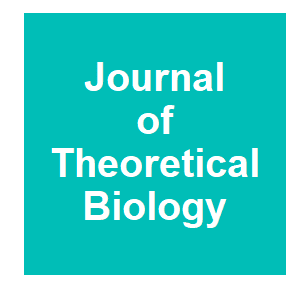
|
Combining refuges with transgenic insect releases for the management of an insect pest with non-recessive resistance to Bt crops in agricultural landscapesT. R. Brewer and M. B. Bonsall, Journal of Theoretical Biology, 509:11. 2021.
Reinforcing the high-dose/refuge strategy with releases of transgenic insects has been suggested as a method for simultaneously managing agricultural pest populations and resistance to transgenic crops. Theoretical and empirical studies have shown that these approaches can work ... Keywords: agriculture, Cas 9, CRISPR, gene drive synthetic, gene editing, governance, plants, policy, regulation |
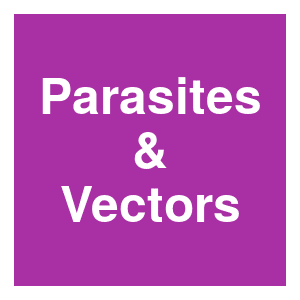
|
Next-generation tools to control biting midge populations and reduce pathogen transmissionP. Shults, L. W. Cohnstaedt, Z. N. Adelman and C. Brelsfoard, Parasites and Vectors, 14:31. 2021.
Biting midges of the genus Culicoides transmit disease-causing agents resulting in a significant economic impact on livestock industries in many parts of the world. Localized control efforts, such as removal of larval habitat or pesticide application, can be logistically ... Keywords: agriculture, Cas 9, CRISPR, gene drive synthetic, gene editing, governance, plants, policy, regulation |

|
Expert advises farmers to adopt gene drive-based pest control technologyS. Thompson, naija247news, 2020.
Dr Rose Gidado, County Coordinator, Open Forum on Agricultural Biotechnology(OFAB), has advised farmers to adopt the gene drive-based pest control technology. Gidado, also Deputy Director, National Biotechnology Development Agency (NABDA), said the adoption would significantly ... Keywords: agriculture, Cas 9, CRISPR, gene drive synthetic, gene editing, governance, plants, policy, regulation |

|
Teach Me in 10 – Gene Drive Research with Dr. Jennifer BaltzegarJ. Baltzegar, Technology Networks, 2020.
Dr Baltzegar teaches us about how the maturation of genetic engineering approaches has advanced gene drives, the two different strategies for gene drives and some of the key questions surrounding the application of gene drives in society. Keywords: agriculture, Cas 9, CRISPR, gene drive synthetic, gene editing, governance, plants, policy, regulation |

|
Après les OGM, la nouvelle technique du forçage génétique inquiète écologistes et scientifiquesH. Leussier, Reporterre, 2020.
Les organismes issus du forçage génétique peuvent transmettre, sans autre intervention humaine, des gènes modifiés à tous leurs descendants. Cette technique permettrait d’éradiquer des espèces nuisibles, comme certains moustiques vecteurs de la malaria. Mais des ... Keywords: agriculture, Cas 9, CRISPR, gene drive synthetic, gene editing, governance, plants, policy, regulation |

|
The future of beef might be a sausage festN. Johnson, grist, 2020.
N. Johnson. (2020) grist. A media report on the creation of a cow with a sex ratio altering genetic change expected to lead to 3/4 of the cow's offspring being males. This type of sex ratio distortion results in gene drive and is also being considered to help control populations ... Keywords: agriculture, Cas 9, CRISPR, gene drive synthetic, gene editing, governance, plants, policy, regulation |

|
Meet Cosmo the Frankenbull: Scientists genetically engineer a bull calf so that 75 per cent of its offspring will be maleJ. Pinkstone, Daily Mail, 2020.
J. Pinkstone (2020). Daily Mail. A media report on the creation of a cow with a sex ratio altering genetic change expected to lead to 3/4 of the cow's offspring being males. This type of sex ratio distortion results in gene drive and is also being considered to help control ... Keywords: agriculture, Cas 9, CRISPR, gene drive synthetic, gene editing, governance, plants, policy, regulation |

|
A Crispr calf is born. It’s definitely a boyM. Molteni, WIRED, 2020.
M. Molteni (2020). Wired. UC Davis scientists spent years editing a sex-determining gene into bovine embryos. In April, Cosmo arrived—and his DNA reveals how far the field has to go. This type of sex ratio distortion results in gene drive and is also being considered to help ... Keywords: agriculture, Cas 9, CRISPR, gene drive synthetic, gene editing, governance, plants, policy, regulation |

|
Meet the first genetically modified bull. Why did scientists change itJ. Kessler, Free News, 2020.
J. Kessler (2020). Free News. UC Davis scientists have successfully introduced a bovine embryo, or the bovine SRY gene, which is responsible for the development of the male. This is the first demonstration of targeted gene insertion for large DNA sequences through embryo-mediated ... Keywords: agriculture, Cas 9, CRISPR, gene drive synthetic, gene editing, governance, plants, policy, regulation |

|
Scientists use CRISPR technology to insert sex-determining geneA. Quinton, Phys Org, 2020.
A. Quinton (2020). Phys Org. Scientists at the University of California, Davis, have successfully produced a bull calf, named Cosmo, who was genome-edited as an embryo so that he'll produce more male offspring. The research was presented in a poster on July 23 at the American ... Keywords: agriculture, Cas 9, CRISPR, gene drive synthetic, gene editing, governance, plants, policy, regulation |

|
An argument for gene drive technology to genetically control populations of insects like mosquitoes and locustsI. Ronai and B. Lovett, The Conversation, 2020.
The fate of society rests in part on how humans navigate their complicated relationship with insects – trying to save “good” insects and control “bad” ones. Some insects, like mosquitoes, bite people and make them sick – remember Zika? Now the U.S. mosquito season is ... Keywords: agriculture, Cas 9, CRISPR, gene drive synthetic, gene editing, governance, plants, policy, regulation |
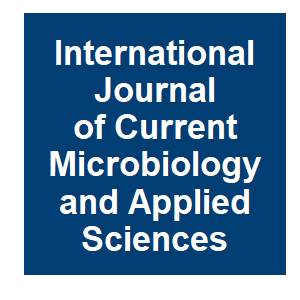
|
Gene Drive: Can this be the Future of Agricultural Pest Management?P. Mondal, U. Mohapatra and M. Ganguly, International Journal of Current Microbiology and Applied Sciences, 9. 2020.
A world free of hunger may be possible when the agricultural production exceeds the global demand for the food. In the era of increasing population, the need for increased food production can be attainable by managing the destructive pests of the agricultural and horticultural ... Keywords: agriculture, Cas 9, CRISPR, gene drive synthetic, gene editing, governance, plants, policy, regulation |

|
Bioengineering horizon scan 2020L. Kemp, L. Adam, C. R. Boehm, R. Breitling, R. Casagrande, M. Dando, A. Djikeng, N. G. Evans, R. Hammond, K. Hills, L. A. Holt, T. Kuiken, A. Markotić, P. Millett, J. A. Napier, C. Nelson, S. S. ÓhÉigeartaigh, A. Osbourn, M. J. Palmer, N. J. Patron, E. P, eLife, 9:e54489. 2020.
Horizon scanning is intended to identify the opportunities and threats associated with technological, regulatory and social change. In 2017 some of the present authors conducted a horizon scan for bioengineering (Wintle et al., 2017). Here we report the results of a new horizon ... Keywords: agriculture, Cas 9, CRISPR, gene drive synthetic, gene editing, governance, plants, policy, regulation |

|
Le forçage génétique (gène drive) et ses applicationsV. Courtier-Orgogozo, Bulletin de l'Académie Vétérinaire de France, 172:94-98. 2020.
Gene drive is a new genetic engineering technology that has been developed over the past five years and that allows genetic modifications to spread rapidly in natural populations. Potential applications are numerous, for public health issues, agriculture and conservation biology. ... Keywords: agriculture, Cas 9, CRISPR, gene drive synthetic, gene editing, governance, plants, policy, regulation |

|
Understanding the Science of Gene Drive and the Potential for an Improved Crop Pest Control System in NigeriaA. Isah and R. S. M. Gidado, OFAB Nigeria, 2020.
Several studies have shown that the Cas9-mediated gene drive technology is cheaper and will be easily affordable by the efficient Nigerian scientists to explore. The application of the gene drive technologies have many more controls over several other devastating insects in ... Keywords: agriculture, Cas 9, CRISPR, gene drive synthetic, gene editing, governance, plants, policy, regulation |
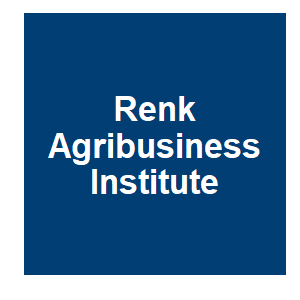
|
Gene drives in Wisconsin agriculture: What are they, and should you support it?Jones, M. and Mitchell, P. D., Renk Agribusiness Institute, 2019.
Spotted wing drosophila and citrus psyllid are not serious economic problems for Wisconsin agriculture. However, these and other smaller, geographically limited applications of gene drives are excellent ways to prove the concept and refine the methods. Pending the outcome of ... Keywords: agriculture, Cas 9, CRISPR, gene drive synthetic, gene editing, governance, plants, policy, regulation |

|
A 2017 horizon scan of emerging issues for global conservation and biological diversitySutherland, WJB, P.; Broad, S.; Clout, M.; Connor, B.; Cote, I. M.; Dicks, L. V.; Doran, H.; Entwistle, A. C.; Fleishman, E.; Fox, M.; Gaston, K. J.; Gibbons, D. W.; Jiang, Z.; Keim, B.; Lickorish, F. A.; Markillie, P.; Monk, K. A.; Pearce-Higgins, J. W.; Peck, L. S.; Pretty, J.; Spalding, M. D.; Tonneijck, F. H.; Wintle, B. C.; Ockendon, N., Trends in Ecology & Evolution, 32:31-40. 2019.
We present the results of our eighth annual horizon scan of emerging issues likely to affect global biological diversity, the environment, and conservation efforts in the future. The potential effects of these novel issues might not yet be fully recognized or understood by the ... Keywords: agriculture, Cas 9, CRISPR, gene drive synthetic, gene editing, governance, plants, policy, regulation |

|
Just Say No to Agricultural Gene DrivesBassey-Orovwuje, M., Project Syndicate, 2018.
By forcing laboratory-made genes on an entire population or species, cutting-edge gene-drive technologies have the power to transform entire ecosystems in one fell swoop. But where leading industrial agriculture firms see dollar signs, farmers in the regions where gene drives ... Keywords: agriculture, Cas 9, CRISPR, gene drive synthetic, gene editing, governance, plants, policy, regulation |

|
Genetics-based methods for agricultural insect pest managementN. Alphey and M. B. Bonsall, Agricultural and Forest Entomology, 20:131-140. 2018.
Abstract The sterile insect technique is an area-wide pest control method that reduces agricultural pest populations by releasing mass-reared sterile insects, which then compete for mates with wild insects. Contemporary genetics-based technologies use insects that are homozygous ... Keywords: agriculture, Cas 9, CRISPR, gene drive synthetic, gene editing, governance, plants, policy, regulation |

|
Gene Drives – Wundermittel? Biowaffe?Swiss Academy of Sciences SCNAT, Swiss Academy of Sciences, 2018.
Gene drives are genetic elements that skew the pattern of inheritance of a given characteristic in sexually reproduc- ing organisms. They can be used to spread a characteristic that can alter or even reduce the numbers of individuals in wild populations of a certain species. Keywords: agriculture, Cas 9, CRISPR, gene drive synthetic, gene editing, governance, plants, policy, regulation |
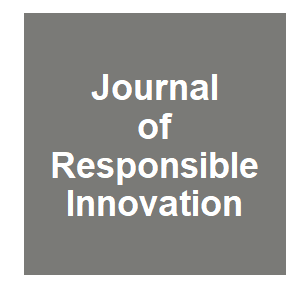
|
Gene drives and the management of agricultural pestsR. F. Medina, Journal of Responsible Innovation, 5:S255-S262. 2018.
Like all pest control strategies, gene drives are not hazard-free. Ecological risk assessment of gene drives designed to control agricultural pests should be conducted before their deployment. The present commentary provides some thoughts on some of the issues one should consider ... Keywords: agriculture, Cas 9, CRISPR, gene drive synthetic, gene editing, governance, plants, policy, regulation |

|
SummaryCommittee on Gene Drive Research in Non-Human Organisms: Recommendations for Responsible, Journal of Responsible Innovation, 5:S243-S254. 2018.
Scientists have studied gene drives for more than 50 years. The development of a powerful genome editing tool in 2012, CRISPR/Cas9,1 led to recent breakthroughs in gene drive research that built on that half century’s worth of knowledge, and stimulated new discussion of the ... Keywords: agriculture, Cas 9, CRISPR, gene drive synthetic, gene editing, governance, plants, policy, regulation |

|
Economic issues to consider for gene drivesP. D. Mitchell, Z. Brown and N. McRoberts, Journal of Responsible Innovation, 5:S180-S202. 2018.
We examine four economic issues regarding gene drive applications made possible by gene editing technologies. The potentially substantial benefits, coupled with the technical, social, and economic uncertainties surrounding gene drives, suggest that a responsible course of action ... Keywords: agriculture, Cas 9, CRISPR, gene drive synthetic, gene editing, governance, plants, policy, regulation |

|
Agricultural production: assessment of the potential use of Cas9-mediated gene drive systems for agricultural pest controlM. J. Scott, F. Gould, M. Lorenzen, N. Grubbs, O. Edwards and D. O’Brochta, Journal of Responsible Innovation, 5:S98-S120. 2018.
To highlight how gene drives could be useful for control of agricultural insect pests, we selected species that are pests of animals (New World screwworm), plants (spotted wing Drosophila, diamondback moth, Bemisia tabaci whitefly), or stored grains (red flour beetle). We ... Keywords: agriculture, Cas 9, CRISPR, gene drive synthetic, gene editing, governance, plants, policy, regulation |

|
Economic issues to consider for gene drivesMitchell, PDB, Z.; McRoberts, N., Journal of Responsible Innovation, 5:S180-S202. 2018.
We examine four economic issues regarding gene drive applications made possible by gene editing technologies. First, whether gene drives are self-sustaining or self-limiting will largely determine which types of organizations have incentives to develop and deploy gene drives and ... Keywords: agriculture, Cas 9, CRISPR, gene drive synthetic, gene editing, governance, plants, policy, regulation |
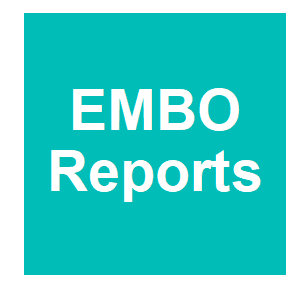
|
Using CRISPR-based gene drive for agriculture pest controlV. Courtier-Orgogozo, B. Morizot and C. Boëte, EMBO Reports, 18:1481. 2017.
The authors respond to comments to their publication 10.15252/embr.201744205 Keywords: agriculture, Cas 9, CRISPR, gene drive synthetic, gene editing, governance, plants, policy, regulation |

|
Agricultural pest control with CRISPR-based gene drive: time for public debateV. Courtier-Orgogozo, B. Morizot and C. Boëte, EMBO Reports, 18:878-880. 2017.
Gene drive technology to control disease vectors or pests has great potential for addressing humanitarian and public health problems. Its application for pest control in agriculture, however, raises important environmental, social and ethical issues. Keywords: agriculture, Cas 9, CRISPR, gene drive synthetic, gene editing, governance, plants, policy, regulation |

|
The End of the GMO? Genome Editing, Gene Drives and New Frontiers of Plant TechnologyK. L. Hefferon and R. J. Herring, Review of Agrarian Studies, 7. 2017.
mprovements to agriculture will constitute one of the world’s greatest challenges in the coming century. Political and social controversies, as well as complications of plant breeding, intellectual property, and regulation, have compromised the promised impact of genetically ... Keywords: agriculture, Cas 9, CRISPR, gene drive synthetic, gene editing, governance, plants, policy, regulation |

|
Science and Technology Committee Genetically Modified InsectsUK Parliament, UK Parliament, 2015.
The UK is a world leader in the development of this technology. The European Union’s regulatory process, however, is likely to hold back progress. There is a moral duty to test the potential of the technology. We therefore support further research and call for action to test ... Keywords: agriculture, Cas 9, CRISPR, gene drive synthetic, gene editing, governance, plants, policy, regulation |

|
CRISPR-Cas9: Gene Drive SafeguardsWyss Institute, Harvard University, 2015.
In this animation, learn how effective safeguarding mechanisms developed at the Wyss Institute and Harvard Medical School can be applied to ensure gene drive research is done responsibly in the laboratory. These safeguards enable responsible scientific investigation into how gene ... Keywords: agriculture, Cas 9, CRISPR, gene drive synthetic, gene editing, governance, plants, policy, regulation |
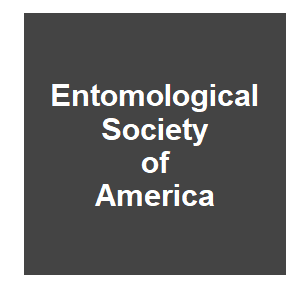
|
What is Gene Drive?Entomological Society of America, 2015.
A fact sheet from the Entomological Society of America. Keywords: agriculture, Cas 9, CRISPR, gene drive synthetic, gene editing, governance, plants, policy, regulation |
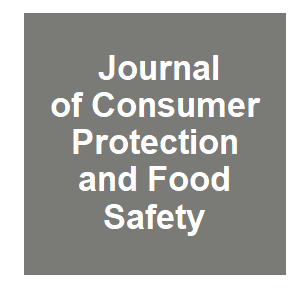
|
Regulatory experience and challenges for the release of GM insectsBeech, C, Journal Fur Verbraucherschutz Und Lebensmittelsicherheit-Journal of Consumer Protection and Food Safety, 9:S71-S76. 2014.
Genetically modified (GM) insects are a potentially valuable new tool for the biological control of insect pests of humans, animals and plants. Considerable progress has been made recently in transfer of GM insects from the laboratory to release and evaluation in the environment. ... Keywords: agriculture, Cas 9, CRISPR, gene drive synthetic, gene editing, governance, plants, policy, regulation |

Contact
David O’Brochta
Foundation for the
National Institutes of Health
geneconvenevi@fnih.org
RSS

